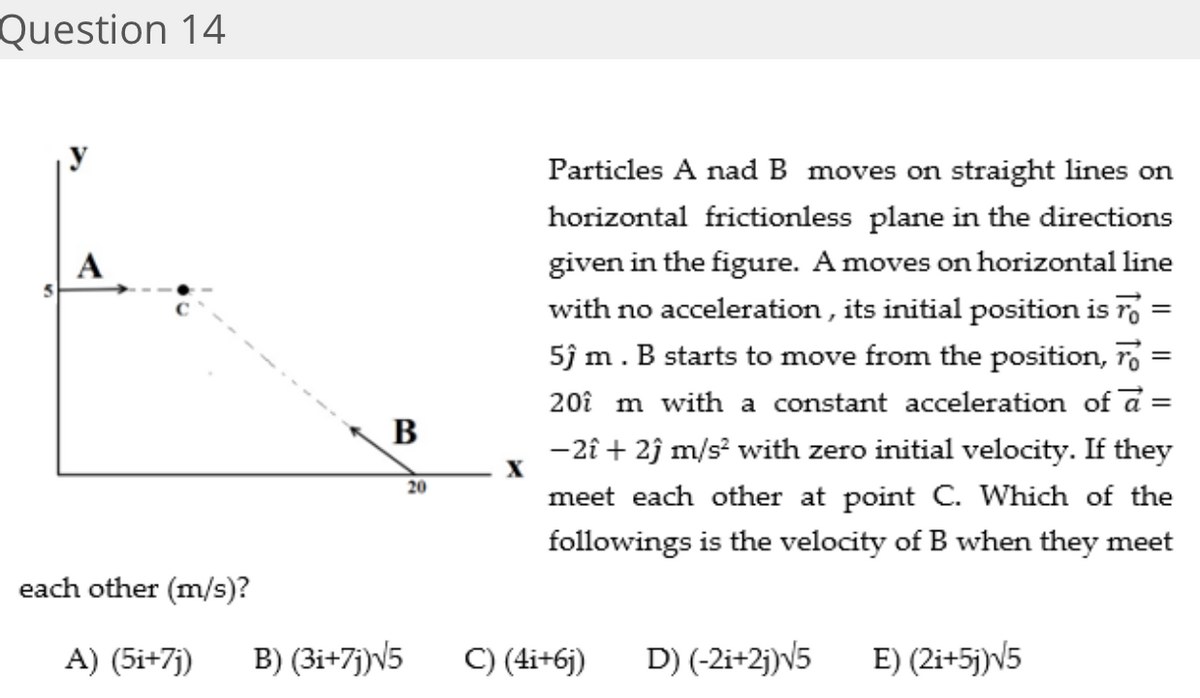Particles A nad B moves on straight lines on horizontal frictionless plane in the directions given in the figure. A moves on horizontal line with no acceleration , its initial position is 7, = 5ĵ m . B starts to move from the position, 7 A 20î m with a constant acceleration of d = B -2î + 2j m/s² with zero initial velocity. If they 20 meet each other at point C. Which of the followings is the velocity of B when they meet each other (m/s)? A) (5i+7j) B) (3i+7j)V5 C) (4i+6j) D) (-2i+2j)V5 E) (2i+5j)V5
Particles A nad B moves on straight lines on horizontal frictionless plane in the directions given in the figure. A moves on horizontal line with no acceleration , its initial position is 7, = 5ĵ m . B starts to move from the position, 7 A 20î m with a constant acceleration of d = B -2î + 2j m/s² with zero initial velocity. If they 20 meet each other at point C. Which of the followings is the velocity of B when they meet each other (m/s)? A) (5i+7j) B) (3i+7j)V5 C) (4i+6j) D) (-2i+2j)V5 E) (2i+5j)V5
Related questions
Question

Transcribed Image Text:Question 14
Particles A nad B moves on straight lines on
horizontal frictionless plane in the directions
given in the figure. A moves on horizontal line
with no acceleration , its initial position is r =
5j m. B starts to move from the position, r =
А
20î m with a constant acceleration of a =
В
-2î + 2j m/s² with zero
itial velocity. If they
20
meet each other at point C. Which of the
followings is the velocity of B when they meet
each other (m/s)?
A) (5i+7j)
B) (3i+7j)V5
C) (4i+6j)
D) (-2i+2j)V5
E) (2i+5j)V5
Expert Solution
This question has been solved!
Explore an expertly crafted, step-by-step solution for a thorough understanding of key concepts.
Step by step
Solved in 3 steps
